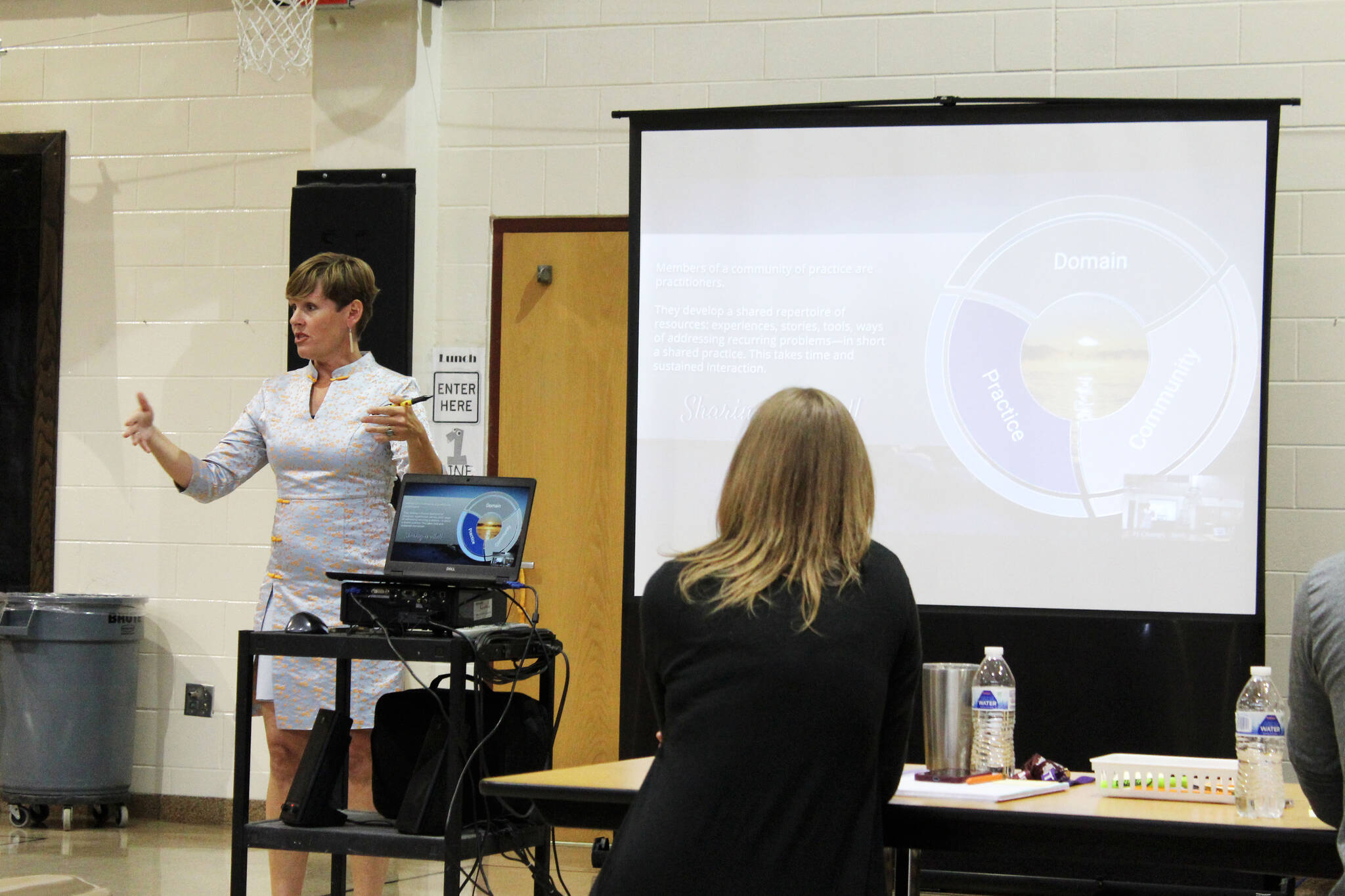Task automation and learning augmentation are among the ways use of artificial intelligence in classrooms may benefit teachers and students within the Kenai Peninsula Borough School District.
That was the crux of a presentation given to school board members during a work session last week by Amanda Adams, KPBSD’s virtual learning and professional development coordinator. Adams, who said she’s worked for KPBSD for 15 years, said she was asked by KPBSD Superintendent Clayton Holland to share information about artificial intelligence, or AI.
First and foremost, Adams said educators are largely interested in AI as a tool to make learning better. There can sometimes be reluctance, she said, to change. People are emotionally attached to the way they learned things growing up, she said, and being aware of that attachment is important when faced with the discomfort of changing how things are done.
“When we talk about changing things in education, we talk a lot about innovation, but it’s really hard to do,” she said. “And that’s because everyone is very much attached to how they were taught (and) how they learned — ‘Well, if it was good enough for me in school, then it was good enough for my kid.’”
That same reluctance, she said, can come with discussions about the emerging role of AI in education.
Adams said there are three basic types of artificial intelligence: reactive, predictive and generative. Reactive AI responds to inputs, but doesn’t learn from past experiences. Predictive AI analyzes historical data to predict future events. Generative AI creates new content or outputs by using learned patterns.
Artificial intelligence, she said, is already being used by KPBSD teachers and students through programs like iReady math, which adjusts math problems in real time based on how a student performs. Other AI applications already being used within KPBSD, she said, include Google Drive, Office 365 and Khan Academy.
She compared the current debate about the use of artificial intelligence in academic settings to the emergence of calculators, which she said was at first met with skepticism and protest from math teachers.
“We used to think that calculators were a really bad idea, right?” Adams said. “Now you cannot take the SAT or the ACT without one. So we have gone from thinking it was catastrophic to thinking instead that it’s an absolute necessity.”
One AI program that has received a lot of attention since it was launched last fall is Chat GPT, which engages in conversational, text-based exchanges. Like any new tool, Adams said, Chat GPT has its strengths and weaknesses. It can provide general information on a variety of topics and assist with writing assignments, but cannot provide real-time information or original thinking.
Adams said she sees Chat GPT’s ability to save teachers time and to augment thinking as being among its key strengths in an academic setting. AI can be used, when teaching literacy, she said, to rewrite text at different grade levels, to generate graphic organizers or to generate templated writing pieces.
“Teachers don’t have time,” she said. “So how do we give them more time? We give them tools that do things more automatic, right? So when we automate some of the processes that right now take significant amounts of time, then we are offering relief to those who need to make some space in their capacity.”
Further, concerns about use of AI by students for plagiarism or cheating may prompt educators to reflect on the goals of the assignment or assessment being given. Adams displayed a spectrum with “bot-created” at one end and “student-created” at the other, with different work distribution scenarios placed in between.
A case of a student creating multiple AI responses, then taking and editing the best parts, might fall closer to the “bot-created” end of the spectrum. An instance where a student consulted the internet or AI for ideas, then wrote their own assignment, would fall closer toward the “student-created” end of the spectrum.
“There are places in our learning for all of these pieces, as long as transparency is in place, both on the assignment side and on the part of the students,” Adams said. “ … We really want to know, not so much, how much was student- or bot-created, but more what was the intention of the assessment? What were we trying to see if the student can do?”
Board member Kelley Cizek told Adams that she has some reservations about the use of AI programs like Chat GPT, particularly if used by teachers for tasks such as writing letters of recommendation for students.
“I think it feels a little disingenuous,” Cizek said. “If you have a teacher producing feedback for work using an AI, I think it could cause the students to feel like their effort is not valued.”
Transparency is the key, Adams said, anytime artificial intelligence is used, whether by teachers or by students. The two times she’s used AI to help her write letters of recommendation, Adams said she’s told them that she plans to build the initial draft in AI and then personalize what the program puts out.
Ultimately, Adams said the reasons that AI may seem scary are the same reasons that also lay bare its trove of opportunities. While there may be consequences to further incorporating AI use in schools, there may also be consequences for not doing so.
“If we don’t incorporate that into our classrooms, then what does that then provide for the kids, right?” Adams asked. “ … If our mission is to educate kids, my mission, personally I think, has been to do it in the best way that I can do it, and certainly AI offers me some opportunities there.”
The school board’s artificial intelligence work session can be streamed on KPBSD’s BoardDocs page.
Reach reporter Ashlyn O’Hara at ashlyn.ohara@peninsulaclarion.com.


